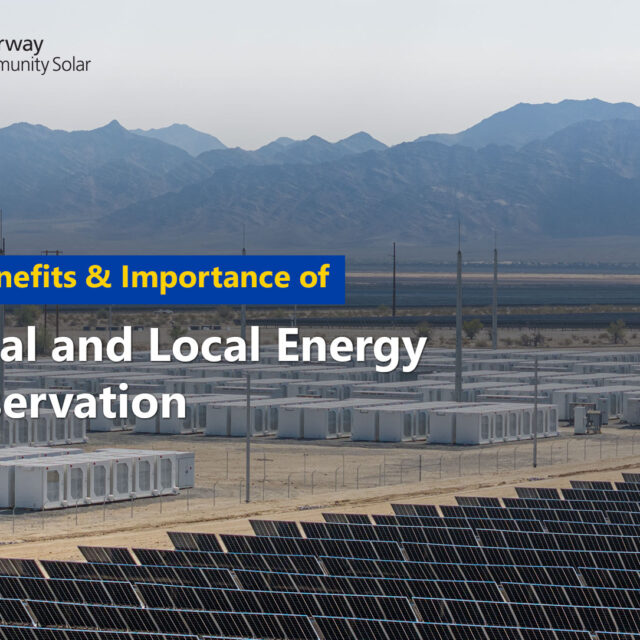
One of our second-place winners for the 2020 Essay Contest Scholarship is Clara Almeter! Clara is a junior Environmental Engineering major at Gannon University. Clara’s winning essay, “Climate Change Mitigation in the Midst of a Pandemic,” won the second place $2,500 prize. Read their winning essay!
Climate Change Mitigation in the Midst of a Pandemic
Clara Almeter
Almost a year following the first surge of diagnosed cases, the devastating effects of the COVID-19 pandemic are continuing to be felt by the global community. It has claimed the lives of over one million people worldwide (Ritchie et al 2020), forced business and industry closures, and has been a subject of political debate for months. However, amidst all the unforeseeable changes, there are some constants that remain. Employees are laid off, but rent is still due. Schools are shut down, but children still need to learn. Countries face nationwide lockdowns, international travel is restricted, less cars are on the roads, and yet, the climate crisis surges forward. Climate change has not stopped in the face of a global pandemic and has no intention of slowing down. 2020 is on track to be the warmest year on record, with a 1.14 ºC increase in the planet’s average surface temperature since the late nineteenth century. There have been record concentrations of greenhouse gases at the start of the year, and Arctic sea ice levels were at an all-time low for much of the summer months (Hausfather 2020). With a climate crisis raging on and a global pandemic that is far from over, a new question emerges: What does climate change mitigation look like in the midst of the COVID-19 pandemic?
The climate crisis is among the most critical existential threats facing the world today. While it has been somewhat buried beneath worldwide efforts to slow the spread of COVID-19 cases, there is no denying that the effects of climate change will continue to become more and more detrimental. Since the late nineteenth century, the Earth’s average surface temperature has risen by 1.14 ºC. While the planet’s climate has seen considerable changes throughout history, this current increase in temperature is most alarming because it is almost entirely the result of human activity since the 1950s and is progressing at an unprecedented rate. This is largely because certain gases that result from human operations, commonly referred to as greenhouse gases, block atmospheric heat from escaping. Carbon dioxide is one such gas that may be released through processes like deforestation, land use changes, and the burning of fossil fuels. Since the Industrial Revolution, humans have been responsible for a 47% increase in carbon dioxide concentrations in the atmosphere. Water vapor, methane, and nitrous oxide are among other gases that contribute to this greenhouse effect, and, like carbon dioxide, their increasing concentrations in the atmosphere can have devastating effects on the environment. In addition to warmer average temperatures, these may result in increased precipitation in some regions, dryer conditions in other areas, acid rain, melting glaciers, ocean acidification, increased incidence of extreme climate events, and sea level rise (NASA 2020).
With such severe consequences, climate change mitigation requires a certain sense of urgency that is not unlike the importance of slowing the spread of COVID-19. Michael
Osterholm, director of the Center for Infectious Disease Research and Policy at the University of Minnesota, likened the pandemic to “A national forest fire of COVID that is readily consuming any human wood that’s available to burn” (Stein 2020). Just as human operations like the continued use of nonrenewable energy, deforestation, and other non-sustainable practices continue to fuel climate change and global warming effects, so too are human actions fueling the continued diagnoses of coronavirus cases across the world. As long as there is fuel to burn, both of these crises will continue to escalate.
COVID-19 has had extensive effects on human life and the global economy. From quarantine mandates to business closures to reduction in tourism and travel, the global economy has arguably been one of the hardest hit sectors. In the first three months of this year, the Dow and Financial Times Stock Exchange (FTSE) experienced their biggest quarterly declines since the year 1987. Unemployment rates have increased in a number of major economies, with the United States seeing one of the highest jumps in yearly unemployment rates from 3.7 to 10.4%. The travel and tourism industries also experienced major declines, with daily flights dropping dramatically between March and May (Jones et al 2020). Similarly, the climate change crisis continues to pose significant threats to the global economy. Industries, such as agriculture and tourism, that rely on natural resources or specific environmental conditions are becoming more and more susceptible to the growing impacts of climate change. Higher costs of electricity, increased energy demands, and reduced efficiency of power generation methods are all anticipated outcomes of the planet’s rising temperatures. The current rate of greenhouse gas emissions is expected to result in annual losses of hundreds of billions of dollars by the end of the century (USGCRP 2018).
With such severe consequences on human life and the global economy, both the pandemic and climate crisis pose a similar question: Is it more economically feasible to let the crises “phase out” or to invest in upfront mitigation strategies? In terms of the COVID-19 pandemic, this comes in the form of an ongoing debate surrounding the economic impacts of nationwide lockdowns versus the financial burden of the disease itself. Sergio Rebelo, a macroeconomist researcher at Northwestern University, has attempted to model this debate by quantifying both sides of the argument. Though somewhat simplified and nearly impossible to quantify with absolute certainty, Rebelo’s initial modeling efforts showed that a yearlong lockdown of the United States, to allow for development of a viable vaccine, would correspond to a cost of roughly $4.2 trillion. On the contrary, continuing without disease control efforts, an additional 500,000 lives would be lost, which corresponds to an economic loss of about $6.1 trillion (Cornwall 2020).
The same debate can also be seen within the climate change crisis. Is it more cost effective to work towards net zero emission rates by 2050, or would it be a cheaper to allow the economy to go unchecked, without change to current energy production, land management, and agriculture operations? In this case, short-term, upfront costs are the key to meeting long-term goals of keeping global warming below a 1.5 ºC increase and reaching net zero emissions in the near future. In terms of short-term costs, economists estimate the up-front costs of mitigation strategies and divide by the number of tons of greenhouse gas emissions reduced. After conducting these estimation and cost comparison methods, it becomes clear that renewable energy is among the least costly climate change mitigation technology. If subsidies and government policies reflect this emphasis on renewable energy, these measures could become even more cost effective (Gillingham 2019). On the contrary, a recent economic study found that, in some sectors, climate change damages will cost approximately 1.2% of the gross domestic product for every 1 ºC increase in average temperature, or roughly $246 billion. Not only will climate change cause decreased efficiency of power generation as well as increased energy demands, but it will also lead to an increase of extreme climatic events (Camuzeaux 2020). The 2006 heat wave in California cost about $5.4 billion, and the fire expenditure in western states has nearly doubled in the last decade (WEF 2020). These costs will continue to increase as climatic conditions become more extreme.
In both the climate change crisis and global pandemic, it becomes clear that upfront and immediate regulation strategies are the most cost-effective approaches to limiting the effects of climate change and slowing the spread of COVID-19. In terms of the pandemic, these strategies include wearing masks when out in public areas, limiting unnecessary travel, funding nonessential business so that employees can remain on payroll, and incentivizing stay-at-home orders. While these necessary strategies may have steep upfront costs, there is no way to compare those costs to the price of losing more and more human lives. In much the same way, strategies to reduce the effects of climate change are the most cost-effective means by which both the planet and economy can continue to survive. These strategies include investing in a renewable energy infrastructure, incentivizing nationwide conversion to clean energy sources through funding and tax credits, and encouraging continued research within the fields of sustainability and renewable energy. Reducing greenhouse gas emissions and limiting the effects of climate change are possibilities, if they are made a top priority. Certainly, these strategies will not come without serious changes, high upfront costs, and occasional drawbacks. However, just as COVID-19 response measures are necessary in promoting human health, climate change mitigation is entirely necessary to promote a viable future on this planet.
The world is at a crossroads right now, facing two critical threats to human health, economic wellbeing, and environmental viability. Both the COVID-19 pandemic and climate change crisis have been proven to result in devastating effects among the global community. In both cases, it seems as if everyone has an opinion on what the proper solution is. However, the fact of the matter remains: if something is not done quickly and effectively, recovery may not be an option. The pandemic’s death toll is painful enough and the extreme weather events and health effects attributed to climate change have taken a serious toll on the world population. Change needs to occur, and it needs to happen quickly. Whether looking at the pandemic or climate crisis, immediate mitigation strategies are the most cost-effective means by which the world population can continue viable life on this planet.
References
- Armstrong, Martin, Data Journalist. “This Chart Shows How California’s Wildfires Spiraling Costs Are Unsustainable.” World Economic Forum, 16 Sept. 2020, www.weforum.org/agenda/2020/09/spiralling-cost-of-californias-wildfires.
- Camuzeaux, Jonathon. “How We Underestimate the Costs of Climate Change, and Why It Matters Now.” Environmental Defense Fund, 23 July 2020, www.edf.org/blog/2020/07/23/how-we-underestimate-costs-climate-change-and-why-itmatters-now.
- Gillingham, Kenneth. “The True Cost of Reducing Greenhouse Gas Emissions” IMF F&D | Dec. 2019, www.imf.org/external/pubs/ft/fandd/2019/12/the-true-cost-of-reducing-greenhousegas-emissions-gillingham.htm.
- Hausfather, Zeke, US Analyst. “2020 Is on Course to Be the Warmest Year on Record.” World Economic Forum, 26 Oct. 2020, www.weforum.org/agenda/2020/10/climate-changeenvironment-earth-temperature-global-warming-heat/.
- Lora Jones, Daniele Palumbo & David Brown. “Coronavirus: A Visual Guide to the Economic Impact.” BBC News, BBC, 29 June 2020, www.bbc.com/news/business-51706225.
- NASA. “Climate Change Evidence: How Do We Know?” NASA, 6 Oct. 2020, climate.nasa.gov/evidence/.
Ritchie, Research and data: Hannah. “Coronavirus (COVID-19) Deaths – Statistics and Research.” Our World in Data, ourworldindata.org/covid-deaths. - Stein, Rob. “Pandemic Is Overwhelming U.S. Public Health Capacity In Many States. What Now?” NPR, NPR, 28 July 2020, www.npr.org/sections/healthshots/2020/07/28/894858475/pandemic-is-overwhelming-u-s-public-health-capacity-inmany-states-what-now.
- USGCRP, 2018: Impacts, Risks, and Adaptation in the United States: Fourth National Climate
Assessment, Volume II [Reidmiller, D.R., C.W. Avery, D.R. Easterling, K.E. Kunkel, K.L.M. Lewis, T.K. Maycock, and B.C. Stewart (eds.)]. U.S. Global Change - Research Program, Washington, DC, USA, 1515 pp. doi: 10.7930/NCA4.2018.
- Warren CornwallMar. 31, 2020, et al. “Can You Put a Price on COVID-19 Options? Experts Weigh Lives versus Economics.” Science, 31 Mar. 2020, www.sciencemag.org/news/2020/03/modelers-weigh-value-lives-and-lockdown-costs-putprice-covid-19.









